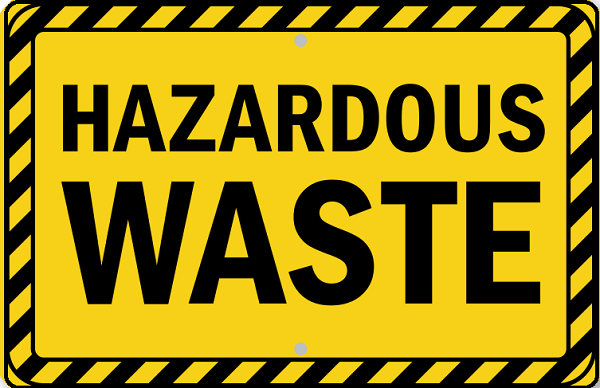A review for Aviation Stores Inspectors – Sofema Aviation Services www.sassofia.com
Definition of Hazardous Waste
Hazardous waste can take the form of a solid, liquid or compressed gas. In the aircraft industry, waste can originate from the service or repair of aircraft components to temporary storage of outdated products that have not been used or new products purchased in excess.
Characteristic of Hazardous Waste
Characteristic hazardous wastes are materials that are known or tested to exhibit one or more of the following four hazardous traits:
-Ignitability
– Reactivity
– Corrosively
– Toxicity.
These wastes may be found in different physical states such as gaseous, liquids, or solids. A hazardous waste is a special type of waste because it cannot be disposed of by common means like other by-products of our everyday lives. Depending on the physical state of the waste, treatment and solidification processes might be required.
Hazardous waste is waste that poses substantial or potential threats to public health or the environment and thus require a stricter control regime.
The classification into hazardous and non hazardous waste is based on the system for the classification and labelling of dangerous substances and preparations, which ensures the application of similar principles over their whole life cycle.
The properties which render waste hazardous are laid down in Annex III of Directive 2008/98/EC and are further specified by the Decision 2000/532/EC establishing a List of Wastes as last amended by Decision 2001/573/EC.
Health Concerns
Improper handling of hazardous waste can threaten human health. For example, acids or bases (such as battery acids and metal cleaning solutions) can destroy or cause irreversible damage to normal living tissues, such as mucus membranes, eyes, gastrointestinal tract, respiratory passages and skin.
Toxins are another health hazard that poison your system. Toxic solvents, heavy metals, paint thinners and adhesives can accumulate in your body over time.
This could affect your nervous system particularly the brain and circulatory system.
Hazardous Waste Disposal Considerations
Hazardous waste should not be disposed of in Waste Container’s.
There should be no mixing of dissimilar waste streams (such as organic solvents and aqueous solutions) into one container.
If non-compatible waste are mixed, it could cause dangerous chemical reactions.
Furthermore, mixed waste cannot be economically recycled.
Non hazardous waste should not be mixed with hazardous waste. If mixed, the whole batch becomes hazardous and the cost of disposal increases.
Once a container is used for hazardous waste, it should not be used for another waste.
Even empty hazardous waste containers are often considered hazardous waste.
Due to the extra expense of legal hazardous waste disposal, the cost of solid waste disposal rises substantially if mixed with hazardous waste.
Hazardous waste disposal should be carried out in accordance with local municipal and country requirements – Do you have this document and is everyone aware of the relevant procedures?
Depending on the amount of waste generated, a facility may retain waste for a certain time period before disposal.
All hazardous waste must be shipped in acceptable containers for transportation and properly labeled.
Remember the generator of the hazardous waste is responsible for the waste from the point of generation (cradle) to the final destination (grave).
The liability never leaves the generator of the hazardous waste.
Waste Minimization
Waste minimization is any process that reduces or eliminates the amount of waste generated.
As a result, it lowers treatment and disposal costs, reduces health hazards, reduces liability and protects the environment. Basically, there are two main techniques to accomplish hazardous waste minimization.
These techniques are pollution prevention and recycling -Pollution prevention consists of product changes and source reduction. Recycling consists of reusing and reclaiming used materials.
For details of all available training please see www.sassofia.com or www.easaonline.com or email office@sassofia.com




